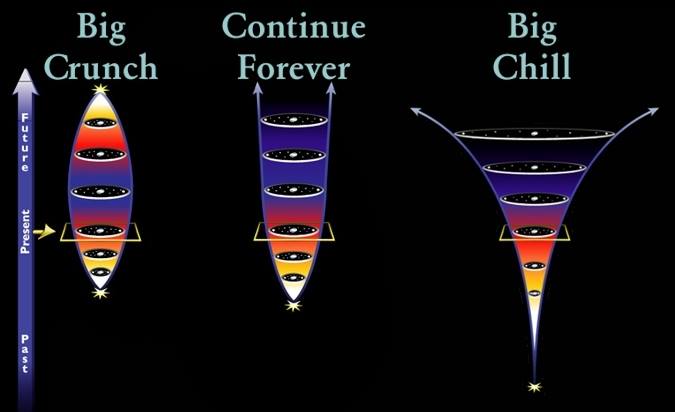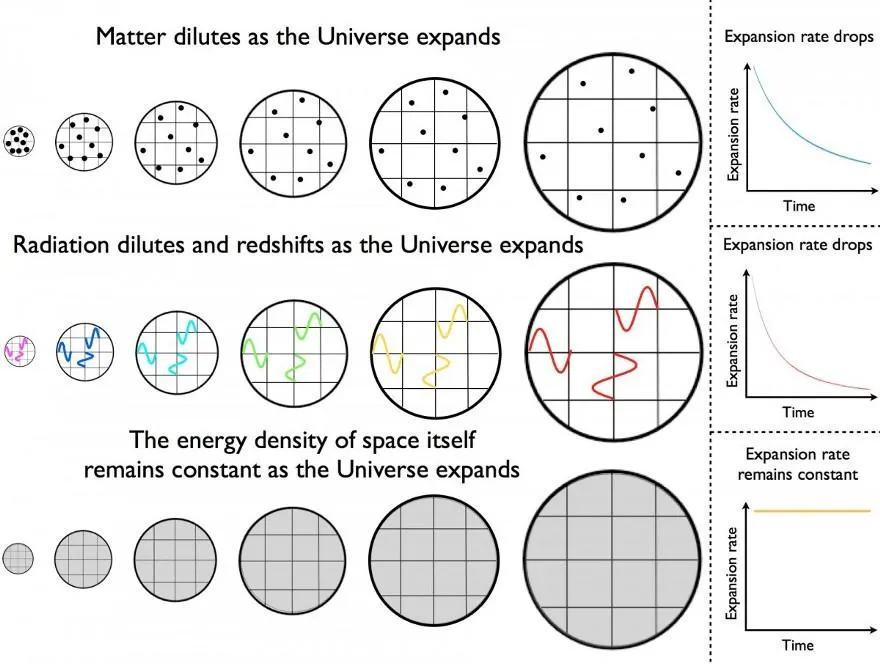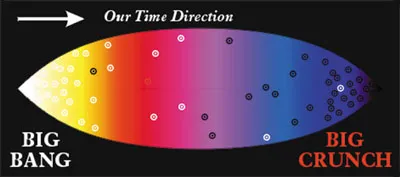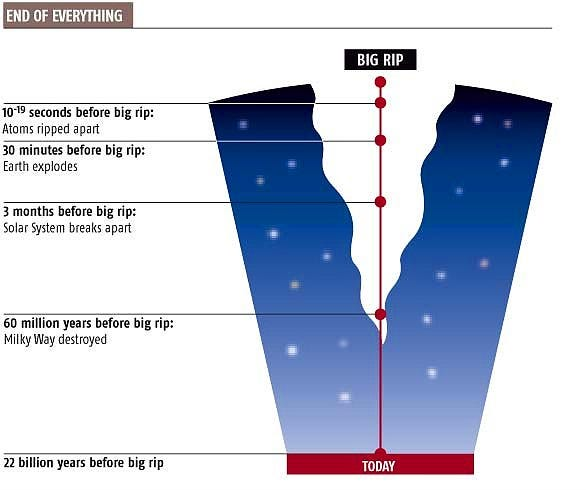The Cosmic Endgame: Fate of Our Universe
- cosmofluencer
- August 4, 2024
- No Comments
By Dhruv Thakwani
Cosmofluencer (Season 03)
As we gaze up at the night sky, it’s easy to think of the universe as an eternal and unchanging backdrop to our lives. Research tells us that this is far from the truth; the universe is destined to end. But how?
In this blog, we go through three of the most popular theories about the universe’s eventual demise: the freezing death or The Big Freeze, the catastrophic collapse of the Big Crunch, and the violent disruption or the Big Rip.
Each offers a unique perspective on how the universe, as we know it, might one day cease to exist.

Big Freeze: The Eternal Winter
A few trillion years later, the universe would have expanded so much that no distant galaxies would be visible from our Milky Way (which at that time would not exist itself). This expansion would continue as stars burn out of fuel and die while lesser and lesser stars get born.
As everything keeps spreading out, the energy concentration of the universe reduces. With this, the temperature of the universe starts to drop. With all stars dying out and the black holes evaporating away (as explained by Hawking due to Hawking Radiation), the universe will become dark, cold, and degenerate.
The energy would have been so spread out that no activity or processes would take place. It describes a time wherein all heat and energy is evenly spread over incomprehensibly vast distances.
In 1852, Lord Kelvin proposed the idea of the universe’s “heat death,” (Big Freeze is sometimes known as Heat Death). This idea is based on the first two laws of thermodynamics, which explain how energy moves and changes form. Kelvin’s thoughts on this were shared and discussed with scientists William Rankine and Hermann von Helmholtz, who also wrote about the concept.
In 1862, Kelvin published another paper, emphasizing that energy can’t be destroyed but will eventually become useless for doing work, leading to the universe’s gradual cooling and inactivity. This idea, known as the “heat death paradox,” suggests that the universe isn’t infinitely old, as it hasn’t yet reached a state of complete energy equilibrium.
Big Crunch: The Universe in Reverse
As we know, the universe is rapidly expanding and galaxies are moving away from each other. According to this theory, there will come a point when the force of gravity will overpower the force of dark energy, which is currently responsible for the rapid expansion of the universe.
This will lead to slowing down and eventually stopping the expansion. Once the expansion comes to a halt, gravity will pull everything back to one point. As the universe starts to contract, everything will come closer and closer and collisions and mergers will occur.
This will eventually lead to a time when the entire universe will be squeezed to a singular infinitely dense point, just like what the Big Bang originated from.
This creates a possibility of a cyclic universe, where a singularity formed by the big crunch event, could yet again burst and rapidly expand, forming an entirely new universe, which could endlessly repeat. This is what is known as the Big Bounce Theory.
The concept of the Big Crunch emerged as scientists explored the outcomes of the universe’s expansion. Einstein’s general relativity and Hubble’s discovery of the expanding universe provided key insights.
Cosmologists theorized that if the universe’s mass were sufficient, gravity could eventually cause it to collapse. In the late 20th century, advanced cosmological models and astronomical observations, including the cosmic microwave background radiation, further refined the Big Crunch theory, indirectly suggesting that the Big Crunch is less likely given our current understanding of an accelerating universe.
Big Rip: The Universe Torn Apart
As we discussed before, right now, the universe is expanding. The reason behind it is the presence of dark energy which is also the reason for speeding up the expansion.
According to this theory, the rate of expansion will keep increasing as dark energy becomes stronger. In due course of time, the forces holding the universe together are overcome by the strength of dark matter, and eventually, all galaxies, solar systems, stars, and every other object, are pulled apart.
Ultimately, the atoms that make up the universe are torn apart and the universe is reduced down to vast emptiness.
The Big Rip theory came into existence from studies on the accelerating expansion of the universe, observed in the late 1990s. Astronomers discovered that distant supernovae were dimmer than expected, suggesting the expansion was speeding up.
In 2003, cosmologists Robert Caldwell, Marc Kamionkowski, and Nevin Weinberg formalized the Big Rip scenario, proposing that if dark energy’s influence continues to increase, it could eventually overcome all forces holding the universe’s structures together, leading to their disintegration.
Conclusion
The fate of the universe remains one of the most intriguing topics in cosmology. While current observations suggest that dark energy’s influence makes an endless expansion or a Big Rip more likely, the continuous advancements in our understanding of dark matter, dark energy, and cosmic evolution may provide new insights.
s we explore these cosmic mysteries, we are reminded of the dynamic and ever-changing nature of the universe, highlighting both the limits of our current knowledge and the vast potential for future discoveries.
References
- WIkipedia | Ultimate fate of the universe
- Fandom | Big Freeze
- Wikipedia | Heat Death of the Universe
- ResearchGate | The Fate of Our Universe: How This Universe Will End





